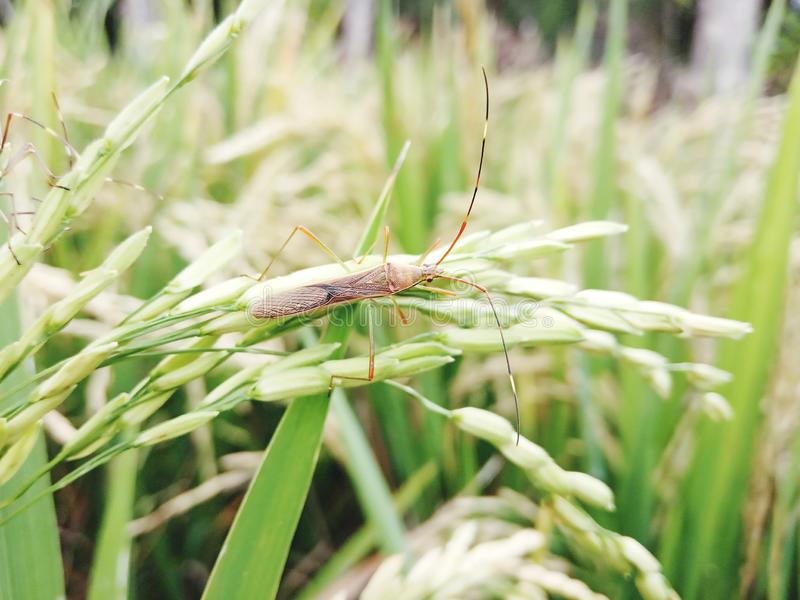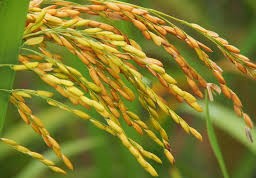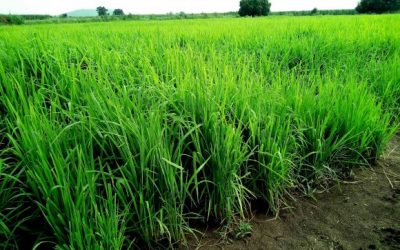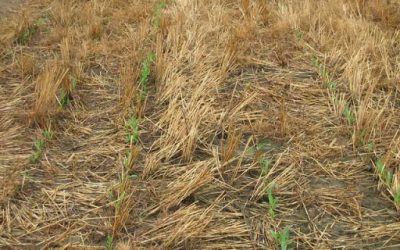Control of insects with insects.

Biological control is – or should be – an important way of managing crop pests for all farmers, whether emerging or commercial.
There are many different types of crop pests. Caterpillars, grasshoppers and locusts can easily be seen and dealt with. They feed on succulent leaves, often eating them down to the stem, or bite chunks out of the leaf before moving on to the next one. This is particularly destructive. The damaged leaves cannot produce food via photosynthesis, and eventually wither away and die.
Some pests suck the sap from stems. Twig wilters, for example, inject saliva that makes the sap easier to suck up. The plant then withers and dies above the point in the stem where the saliva was introduced. Other pests may be less obvious, because they live beneath the surface and attack plants from the roots upwards. A damaged root system has difficulty absorbing the water and nutrients needed for plant growth.
Biological control of insect pests involves using other insect species, called ‘biological control agents’. Although many local farmers think this method is mainly for emerging farmers, using insects as control agents in the US is an industry worth $100 million a year.
As Farmers in Africa, we’ve barely started tapping into this form of pest control. In fact, very few even know what biological control is about. Simply put, it’s about manipulating the food chain to our advantage. Planted crops provide an abundance of food for pests. Predators should be encouraged to come in and control them.
Insect types
Predators:
These are insects, such as ladybirds that eat other insects throughout their lives, in both larval and adult form.
1. Parasitoids:
Similar to parasites, these insects kill the creature they settle in, which is why we like them. Many wasps fall into this category. They lay their eggs in the host insect. At hatching, larvae feed on the host and kill it. When using biological control agents, the pest species must be positively identified. Your extension officer should be able to help with this. The next step is to identify a natural predator that can be encouraged in large enough numbers to deal with the pest. It is important to make sure that the encouraged predator does not create greater problems for the farmer.
Biological control insects
1. Ladybirds:
In both their larval and adult form, ladybirds eat aphids, leaf hoppers, mites, scale insects, small caterpillars and other pests. A single ladybird can consume up to 50 aphids a day.
Ladybirds are among the most welcome biological control agents.
2. Green lacewings:
Although the adults are important pollinators, feeding only on pollen, the larvae eat many insects, including aphids, caterpillars, mealy bugs, mites, moth and butterfly eggs and other soft-bodied pests. They have big appetites and haven’t earned the name aphid lions for nothing.
3. Hoverflies:
Adults feed on pollen and nectar, and are important pollinators. The larvae eat aphids and small caterpillars. As do ladybird larvae, a single larva can eat more than 50 aphids a day. The larvae are approximately 1cm long and resemble small bird droppings.
4. Katydids:
Some katydids will eat aphids, caterpillars, insect galls and other pests. Katydids have long hind legs and antennae. They are mainly nocturnal.
5. Assassin bugs:
Efficient predators, they will eat virtually any kind of insect, of any size.
6. Preying mantids:
Another useful insect predator.
7. Nematodes:
These are minute worms that feed on soil-dwelling insects that attack the roots of plants and trees. However, they can be harmful to some vegetables, such as potatoes.
8. Ichneumonid wasps: They eat caterpillars.
9. Potter/mason wasps: Also eat caterpillars.
10. Tachinid flies:
Possibly the most agriculturally important group of insects. These beneficial parasitoids attack a number of pest caterpillars, bugs and beetles.
11. Spiders:
Because they vary in size, spiders can prey on insects ranging from aphids to locusts and grasshoppers. Apart from insects, there are other biological control agents, such as lizards, frogs and toads. Many of these eat the ground-dwelling pest species before they can reach the plant.


